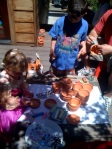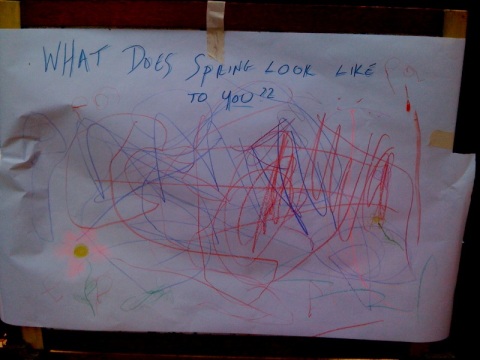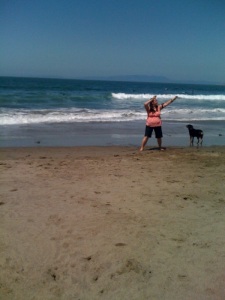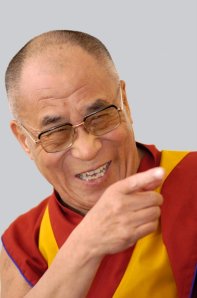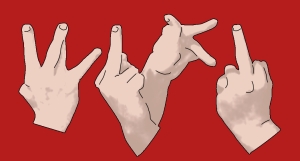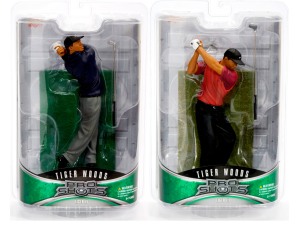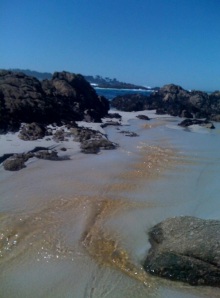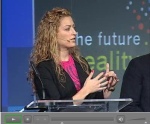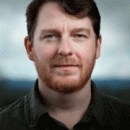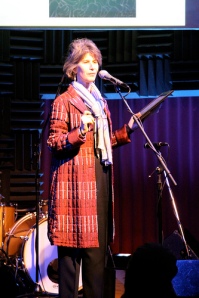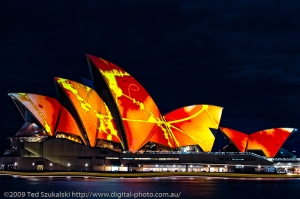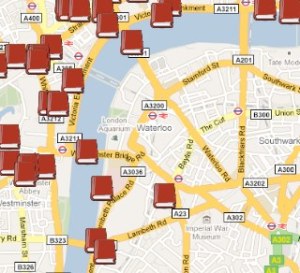Plastic Childhood?
May 3, 2010
 I didn’t intend to throw a kids party with no Plastic. Yet, it removed the veil of petroleum and it was a clear day of joy. Children’s parties have become events about things: gifts, juice boxes, “sharing” which is another word for not grabbing the gift you can’t have, and arguing with the children to stop running, stop yelling, stop being such a crazy thing!
I didn’t intend to throw a kids party with no Plastic. Yet, it removed the veil of petroleum and it was a clear day of joy. Children’s parties have become events about things: gifts, juice boxes, “sharing” which is another word for not grabbing the gift you can’t have, and arguing with the children to stop running, stop yelling, stop being such a crazy thing!
It was not Luca’s birthday. In fact, there was no reason to have a party – but the memory of May Day. No one celebrates it anymore – but, what the hell, we needed some fun, some celebration in this time that’s been filled with crappy news! Also, Luca thought a party celebrating flowers coming back and summer almost here was an excellent idea. So, we did not invite the children in order to eat cake. We did not invite the children to rip open gifts. We had a party to be together.
And, that’s what we did. We had a party where, for some reason the kids did not scream, the adults talked to one another about stuff besides their kids, and we were more rested after the party.
I am NOT a person who has gone totally plastic free. It’s really hard (as a person) but with kids it’s really tough! I was introduced to the idea/fact/reality/terror of plastics by Manuel Maqueda (a founding member of http://plasticpollutioncoalition.org/) about a year ago, and the issue of plastics taps into major issues for me: ecological destruction that needs to change, civil liberties violations (we are sold water in toxic bottles, and this water and soda is aggressively sold to poor people), and finally, it’s killing us. I’ve been on a project with J Nichols (www.wallacejnichols.org) who is an oceans activist who also lives the life of clean and good slow food – I’ve learned a lot from him and his partner, Dana. And, then there is Beth Terry, living plastic free for two years who has explored this dependency of ours with clarity (www.fakeplasticfish.com) – been inspired by her as well.
So, I am a newbie – and I was curious, as a test, to see what it might be like to remove the plastic (especially since all that petroleum you sea in the ocean is the basis of plastic that holds our water). I did five simple things:
– Reused all the glass milk bottles (for milk) as containers for flowers, hold juice (no juice boxes), water to drink, and left overs.
– Reused all of the glass jars for Jam as glasses and had a few re-used plastic cups (but only 10 were put out).
– Bought paper streamers and put them up in the morning. No balloons.
– Bought fifteen tiny terra cotta pots, chalk, stickers (ok, couldn’t find un-plasticy ones), dirt, and seeds.
AMAZING things happened. The kids didn’t have juice boxes, so they did not scream. We did not put cupcakes out in full view – they didn’t even ask for them. Some people brought gifts, but once they were opened they were put aside because the kids wanted to GO OUTSIDE. Wow, they wanted to make the pots and plant. So, again, I can barely get my butt in gear to really plant my garden, but the kids took such time to make them – and were proud.
Then, the parents. Ok, I bought beer and wine. Please, it may be noon but let’s be clear – we make fierce espresso and even knowing you can relax, and have food (I made some salmon and grown up food so we did not go hungry) places you, the adult, in the picture: in the experience of fun!
 I invited back that lovely facepainter (I wrote about that in in February “Body Paint Gone Wrong” about http://bit.ly/cpp0h3) – his name that he uses is Oliver Twist…come on, it’s worth it just to have a person in the house named Oliver Twist! Why facepainting? Well, it’s fun. And, Oliver has new paints that are not oil based, but, I noticed something the last time we did it: children love to choose a new face.
I invited back that lovely facepainter (I wrote about that in in February “Body Paint Gone Wrong” about http://bit.ly/cpp0h3) – his name that he uses is Oliver Twist…come on, it’s worth it just to have a person in the house named Oliver Twist! Why facepainting? Well, it’s fun. And, Oliver has new paints that are not oil based, but, I noticed something the last time we did it: children love to choose a new face.
So, as some kids played with dirt, the others chose their faces. And, while they had their faces painted, I noticed we all stood around watching them. They sat quietly (did that have something to do with no juice boxes, or the parents being still and watching them?)
What happens to a child when they are really looked at? Seen? Not, juiced up, not fed sugar, or yelled at to stop being wild: from the stuff we feed them?

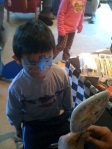 The party, for me, felt open. We were all smiling. The children were the gifts, the treats, the party favors – they ran and made bubbles, and yeah, we made balloon animals – there it is, that icky plastic – though we didn’t feed food off of them.
The party, for me, felt open. We were all smiling. The children were the gifts, the treats, the party favors – they ran and made bubbles, and yeah, we made balloon animals – there it is, that icky plastic – though we didn’t feed food off of them.
Each kid had a new face.
Each kid shared.
Finally, the meltdowns had more to do with naps – and less to do with sugar high.
And, in the end, they made something – they made the party, made the plants, sat on the earth and not in a bouncy house, chose their body and their art. They were May Day – a celebration of life:


 And, so, yeah – I’ve told you about our party. And, here’s the nut of it – I spent half the amount of money for the party (party favors were the pots and paint, there were no extra party favors, there were no plastic utensils/cups/plates to buy)…and it took under an hour to clean up (with three of us pitching in). Oh, and not ONE big plastic bag filled with plates, cups, gunk – not one bag.
And, so, yeah – I’ve told you about our party. And, here’s the nut of it – I spent half the amount of money for the party (party favors were the pots and paint, there were no extra party favors, there were no plastic utensils/cups/plates to buy)…and it took under an hour to clean up (with three of us pitching in). Oh, and not ONE big plastic bag filled with plates, cups, gunk – not one bag.
The house was lighter. It felt good. The kids did eat hot dogs, though we had out little carrots – but chips as well. They were kids. And, they were not encased in plastics – pumped with the crap that comes in plastic – and it wasn’t that hard to do: and I loved making the party for them – as did, it seemed, every parent there. Because we love them and want them to be happy – and healthy.
Later, when were cleaning up, I saw that one of the questions I had asked as a piece of art for the kids was answered (picture below). Don’t read to much into it, but notice how even in the presence of chaos a kid made a flower on the bottom. The kid probably was older than the littler one who made the squiggles. That’s not the point – the point for me, is about a hope for this – a clear picture of a flower, pushing from the chaos: breaking out from behind the thick, plastic film that we wrap around ourselves, and our children.
The sea is a dance (of oil)
April 29, 2010
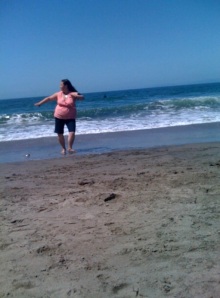 It’s been hard to slow down. I’ve been working hard with J, Jake and Stuart on our piece at The Academy of Sciences in June. It’s a piece about the sea. But, I had forgotten the feeling of water: till I saw this woman dance.
It’s been hard to slow down. I’ve been working hard with J, Jake and Stuart on our piece at The Academy of Sciences in June. It’s a piece about the sea. But, I had forgotten the feeling of water: till I saw this woman dance.
Last weekend, I saw her. She had her earphones in and had a nano in her right hip pocket. She was singing to herself, and her sister was sitting on the sand watching her. I was very tired.
We had gone to the beach to relax, watch the surfers and let Luca run free.
I stared at this dancer.
I don’t think I was gawking. Yet, like a fan, I asked her sister if I could take a picture. I got the sense by her laugh that my taking a picture might delight her dancing sibling. I took a whole bunch. Then, I crouched down, and in an incoherent way (deeply tired) I said, “Well, she’s really in it, isn’t she?”
The sister turned her head, kindly, and replied, “Of course.”
Of course. Yes, I forgot. Some people go slow. And, to dance hula you have to slow down, to hear the crash of sea behind you as the drum. Though, in this case, the dancer had earphones in and she could have been listening to Lady Gaga for all I know – but, she was smiling, and laughing a bit, and danced on without any awareness of us.
What I see when look at this picture (and at the memory of her) is how extreme we are in our relationship to the sea – or, perhaps it’s just me. One view is that she is a perfect moving body in front of a perfect moving sea. Another, is that she is a human with ups and downs, humor and faults, and she is dancing before a sea filled with more pollution than plankton. Two extremes.
I sat down, I pushed my feet into the sand and watched my kid learn to surf by jumping high onto a boogie board laying on the sand. Two visions of him popped up: my blond Adonis learning to ride the sea before a body of water he will come to know. And, my four year old who has been a huge challenge recently what with the fixation on legos and demands to jump on the bed, and an ocean that may not be clean enough for him when he is old enough to surf.
I had a headache. I had a heartache.
So, I watched her some more.
Surfers were behind her. That dog was trying to get into the act. And, she was simply beautiful in her exact, languid flow. She was digging her personal time on the beach. She was not cut in half. She was all of herself, dancing in front of the ocean which is all of itself.
I’m tired of being torn in half about the sea – and perhaps all things human. We are all the splendid movement and trash within us – we are both/and – we just happen to be at a point where we need to decide how we want to live our lives so that we, and the sea, or the sea (and we) won’t be choked up with our filth and remnants of our fast lives.
I watched her for a while and felt the integration of both good and bad, the movement of her body and the speed of my life – which needs to be reminded of another rhythm.
I felt better. I came to the conclusion that we can clean up inside and out, slow down inside and out: we/I can stop and reconnect.
Then I saw this picture this morning – and the feeling of integration is replaced with rage:
What dance with death are we in a tango with? What does this oil spill, one of the biggest perhaps of all time, do to the movement of our lives – to our ability to look our ancestor, the ocean, in the eye?
I only hear all the hips of all those who have made the sea their music to dance to, all those dancers of the living and the dead, ache.
Today, that lovely dancer from last weekend seems like a relic of innocence. Today, my heart is filled with British petroleum.
The sea is dancing in oil.
An ocean without a hero…
April 15, 2010
This year is the 100th birthday of the great Jacques Cousteau. My whole life I’ve seen him as a hero: someone serious, brave, on a search – like this picture – a life etched against his own adventure. But, this is not what I was thinking a few days ago when my four-year-old son ran from the sea screaming, “I’m saving myself from the Ocean!”
Luca had been talking to the waves in a rapid back and forth manner, as he made a mad dash from the very same discussion with that same sea.
Watch children who are practicing what it means to be brave, or safe, or on their own, and you may observe their testing of the sea. Yes, they could be sucked into the water – because they’ve been told it. But, they choose to play with the water because deep down there is a feeling of being in a story with it. And, so they alternate with the sea being the monster and they playing the hero. Either way, children seem to feel how we begin and end with water.
This is our human story with the sea isn’t it? The Greeks wrote of the ocean as the great gatherer of forces, of secrets, of men and their journey into the unknown. Rarely was the sea the hero – the hero was a person taken far from home, meant to conquer lands, meant to schtup women and in the end get the lasting point that (as Dorothy reminds us in the Wizard of Oz) “there’s no place like home”. For the Greeks, the sea was not home – it was the middle place between humanness and becoming heroic: it was the unconscious (before they knew of such a thing) – it was the endless depth of discovery.
Other great poets and writers have taken the sea on. From Moby Dick to Rimbaud’s “The Drunken Boat” (my new favorite poem, thanks to dad) http://oldpoetry.com/opoem/show/45556-Arthur-Rimbaud-The-Drunken-Boat- the sea has been the anti-hero, and man (usually, male) has found the path to heroism by being witness to the beasts in and off the sea – and most often, killing them.
Hero’s, in the past, have been the killers on the sea – or, the killers of the sea. It was rarely a love affair.
I’ve started to think that our relationship to heroes may be part of our problem when it comes to the death of our sea. Or, to be more blunt, the concept of heroism may need to be completely changed in order for people, humans, those of us not riding alongside Ulyssess, to do something to save the sea.
What’s wrong with heros? We need them, don’t we? We’re supposed to grow up to be them. A hero, we believe, is a person who, against all odds chooses the right thing. Or, chooses the selfless thing in order for others to live. Or, chooses to tell the truth. Yes. These are all the necessary elements for being the better part of valor: the person who stands on the earth and takes the harder road. You know this. You’ve been told to try to be one, at least once in your life.
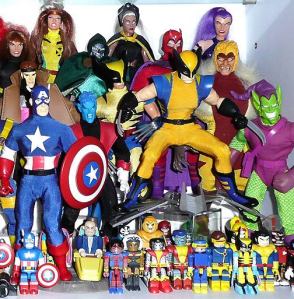 Yet, being heroic seems so out of reach. Because, in this contemporary time, heroes are also supposed to be “super” – never harmed, always in the right, fearless: not very real – much like the plastic super heroes that we give our kids.
Yet, being heroic seems so out of reach. Because, in this contemporary time, heroes are also supposed to be “super” – never harmed, always in the right, fearless: not very real – much like the plastic super heroes that we give our kids.
I look at these these plastic superhero dolls and can only see how they represent this “too much-ness” – the unattainable perfection – like Tiger Woods: who is a perfect plastic thing. He even has an action figure.
Ah, Tiger, how the hero falls. In true Greek form, Nike put an advertisement with Tiger looking into the camera, not speaking, while the voiceover of his (now dead) father asks him, like Zeus from above, what has he learned: is he now a man? http://www.youtube.com/watch?v=7XXGZFqDAUo
It is all out of reach, this real hero thing. So, we commoditize it and make our heroes plastic action figures, and then we end up with their bits and pieces floating in the sea.
I asked my friend J who is a biologist with turtles, why we throw things into the sea? Poison. Plastic. Toxic crap. And, his point was clear – we have always sent things out to the sea: dead bodies into the horizon, candles, bottles with messages, skipping rocks – we have always put ourselves out into the sea to make sure that is ends up, “There”.
There, is that place beyond the horizon where our animal brain believes the Sun lives. There, is the place that takes our feelings and comforts us. There, is where we think the junk and plastic goes – magically transformed into something clean.
Though, to quote Gertrude Stein, “There is no there, there”. She meant it about Oakland, but I mean it about the sea. There is no There anymore: no Monster of the Sea that we need to Tackle. No hero we will become by trying to conquer it.
Cousteau was a hero. He was not plastic, although the production of plastic was just beginning to be made when he was born. He did not go to the sea to fight it. He did not go to conquer it: he went to the sea to find the world beneath us. As a naturalist, and a scientist it was not his job to anthropomorphize the sea as a hero, or the species in it: it was his job to teach us – and in turn point out our interconnection.
Sadly, it may be that because the role of the hero cannot work anymore, we therefore do not know how to be heroic when it comes to the environment. We are of the habit to look to individual people to be the hero – like Al Gore and many others – we look to “Them” to save “There”. Yet, it is the “We” – groups of children and adults, artists and scientists, politicians and writers, groups of people will redefine the “hero” into something more powerful: not throwing ourselves into the abyss, but taking small, fast actions to enact change. This is not about some mushy, sentimental “liberal” concept of togetherness – it’s the very hard truth that the sea is choking to death, and one hero will not be able to “fix” it. Heroism itself is just another “ism” – and, “We” is a complicated, layered solution that we are not good at, yet.
It is very hard to let go of this desire to be a hero, and, it is not just a man’s struggle: it’s a struggle for all of us to not try to be perfect. And, maybe, it’s our fear of not being perfect that has led to the commoditization of heroes – we’ve turned “Heroic” stature into plastic – the very thing that is killing the sea.
Does this all mean that we need to find the resolve, both the love and the grief, to admit that we must save the ocean – the true hero – from ourselves?
Yet, even after all this pondering, I admit it, I truly wonder what Cousteau would do?
Probably tell us to get off our asses.
But, he’d say it with a great accent, a smile, and a look that if you let him down you’d let down the ocean herself.
Moving Walls and Digital Frescoes
April 3, 2010
 I have always had a fascination with walls.
I have always had a fascination with walls.
Here, I was about four. This was one of my dad’s theaters. I think it was backstage. But, I didn’t care: it was a wall that held a story, and that was what I loved – that was the family business – telling stories to strangers.
I have not fallen out of love with walls. In particular, I love walls in public spaces where people project images, blast music, make dances or create a commotion.
And, even though I work with digital technology, I still love a wall that stands outside of computers — but, I seriously love things made in computers that get projected out to ravish, and cling, and create a new way of looking at a wall. Either way, I love walls. I think this started with the theater.
Or, perhaps it started with my first mentor: Elise Bernhardt.
In the early 1980’s, Elise founded Dancing in The Streets. She had the chutzpah to put dances on the Brooklyn Bridge. Then, convinced Grand Central Station to let dancers take over the entire joint. Stephen Koplowitz had dancers in the windows, and Savion Glover tapped in the lower terminals. Merce Cunningham’s dancers dominated the huge central area of Grand Central and people were forced to walk around them to get to their trains. Chutzpah!
Here’s what I learned from Elise, and it’s good advice if you want to take over a building and put art in it, or have a really big dinner party:
– Pick the most exciting space you can find and decide, with total conviction, that it’s right.
– Envision the most exciting things possible in it.
– Admit that you can’t envision the most exciting things in it alone – find the most talented people to come up with more ideas.
– Ask people for money (or, fill in here, “Ask for pot luck”).
– Ask LOTS of people for money. And, then ask again. And, tell that the idea of dancers in windows, and people flying from walls, and digital images taking over buildings is GOOD for everyone. That people in public spaces looking at things together is what the history of culture is all about. That this work revitalizes community and puts attention on needed public space (which she proved from Redhook to Grand Central). And, then look them straight in they eye and say, “Plus, it’ll be gorgeous”.
– Then, make sure there is good food.
That’s pretty much it. Oh, and fall deeply in love with the knowledge that the walls of a public space can seem totally changed when people even remember having seen art in it.
A few years ago, I told Elise I missed big spaces with big things happening in them. She told me to call Zaccho Dance Theatre, and Joanna Haigood, and become their friend (That’s Elise in a nutshell really, just call for god’s sake, it’ll be gorgeous!) (www.zaccho.org) Zaccho is based in San Francisco and takes a blank space and flies off of it. Literally.
The picture above is of Zaccho doing a full digital projection on HUGE abandoned silos. The piece included Zaccho and the people that lived in a neighborhood where the closing of a plant had closed down the local economy. All the participants tried to imagine a time when there were fields – and not machines. Amazing way to look at history. Though, let’s put this into perspective – see those little dots on the silos? Those are dancers on harnesses who are flying/dancing within, up and down and around those silos. Well, this work meets my need for a Sistine chapel that moves. A small request…but why not.
And, why not??
Now that digital technology can do so much as a projected medium, why not have Sistine chapel environments up the ying yang? Obscura Digital here in San Francisco does this http://www.obscuradigital.com/ But, let’s be clear – OD is not an arts organization, not even a production company – they are a culture unto themselves who make really humongous projection based immersive events for huge companies. Oh, and sometimes a band. And, yes, huge domes for people to experience the sea. But, generally, they make products to mess with your head. They messed with the head of Carnegie Hall:
 The images wrapped the building. They moved. They were playing along with the music – talking and changing shapes. And, that was only a small example of what could be done with this level of digital imagery to a wall.
The images wrapped the building. They moved. They were playing along with the music – talking and changing shapes. And, that was only a small example of what could be done with this level of digital imagery to a wall.
There are artists, and technologists who are specifically focused on how to use digital technology as a form of paint (or movement/spacial changer/”head-messer-upper”) itself. And, these are the people who I am watching carefully – because art has often shifted into high gear – into a voice for a new era – when it is seen as a huge image, in a huge place (or in a small place with hug impact) but, always in a public place.
Last year there was a lovely homage to walls when 77 Million Paintings was projected live on the Sydney Opera House.
Brian Eno made these images and they run on an algorithm that makes it impossible for the same collection of images to ever been seen in your lifetime – each picture is seen once, and then regenerates (or gestates) for a very long time.
And, that is interesting – and wistful.
But, to me, the fact that he had those images shift and change, and exploded on those massive sails on a public meeting place, and that those images created a new memory precisely because they reframed (changed) that space (quite publicly) is quite touching – and wonderfully demanding.
Like I said, I’m just a sucker for blank spaces on walls.
And, I love to find them filled with something, someone, someplace we can remember: together.
Remix of Memory: Working with Ame and J
March 29, 2010
Note: All photos and materials on these pages are under copyright by A. M. Hoch
“I want the space enveloped by my installations to feel like the center of the atom: a place where our mundane laws of space and time breakdown, where the architecture of matter is replaced by the architecture of the imagination; where the laws and truths of the emotions and the spirit prevail over the material world” – Amy Hoch.
Ok, I am doing something that I am not sure is verboten in blogging – but I am returning to this post. It began as a post about Ame, but now I need to add another person. The first blog was this one http://whatsarahsees.com/2010/02/11/theater-of-memory-working-with-ame/
I am returning to this post because I am working with artists and scientists on art/media projects and it’s impacting me…it’s exciting and I see how science and art can play together, freely.
Since 2001 I have been working with a lovely and insightful artist named Ame Hoch. She was trained as a painter, though over the years she moved into installation and has found a way to make you feel you are inside a painting. My eyes have changed working with Ame. First, she is incredibly humble, while being obstinate and brilliantly opinionated! If I want anyone to tell me the truth, it’s Ame. If I look to anyone to tell the truth in a piece of art – while turning my head inside out – it’s Ame!
Though, she got me thinking about science, biology and it’s place in a piece — no person had ever made me think about this before.
I grew up not equating science with art, nor for that matter, women. Though Ame, and many I now know, have begun to turn to science as a place to look at the beginnings of time: the beginnings of the body. I have always had an interest in the esoteric elements of science (or so they seem) in Quantum Physics (which, hello, I really struggle to understand, but Love the struggle all the same). Where science used to be the place of guys, I now am engaging in science as a part of the narrative, paint, theme for art: where the heart of being a woman (and her voice) has a partner with the scientific data.
And, I am also interacting with scientists who care about media/art. Dr. Wallace J Nichols is one I am lucky to be working with. More about his work anon.
My interaction with those in science interested in art began in the early 2000’s when I was part of a team of people looking to develop a national art and technology network through The Kitchen. The Kitchen is a multidisciplinary cultural center in New York that was bringing together artists, scientists and tech tools to see how there might be collaboration. What I felt back then was that scientists and artists were still split apart by a need to “defend” process, their own, as well as argue over what art is or is not (is engineering pigs with wings in fact art? is putting sensors to a dancers body still his body, or does it belong to the software program?) These arguments were, well, arguments to me. I wanted to see what happened when you mushed those worlds together – but, that was not what people wanted to do.
I see a change. Academy’s of science have art programs. Galleries are comfortable with technology being a part of collection. Visual artist are using more and more science in their work – found objects and natural elements of nature are part of the palate. It’s exciting to me.
Though, I still want the mush, that mash up, the combustion of artists and scientists to play together: to tackle the large, achy topic of the planet.
Like I said, I’m working with a scientist named Wallace J. Nichols (everyone calls him J) who is a world expert on Turtles (picture of him on the right of the turtle) www.wallacejnichols.org J lives with his lovely family in the woods of what he calls the Slow Coast off Pacific Hwy 1, but spends a great deal of time on the road, traveling the world working with communities to save, salvage, re-organize their habits around fishing, the sea and the turtles he protects. Though, what is startling to me is that he’s a natural media maker. He has the artist in him. And, what’s that? It’s the ability to turn a fact into feeling, and a feeling into visual representation that makes people stop – look – and perhaps change their lens.
On the project we are developing I turn to J a lot, not just for his crazy smart brain, but what I now see as that practical, data driven approach to thinking: it’s not cold, it’s just exact. Though, he’s able to look at the metaphor of a thing: the intangible element of a topic or problem because, as a scientist, it’s his job to understand, not to be right, just to watch, learn and share the observation (which can be totally dangerous – think Darwin et al).
And, it’s this exactness (and observation) that great artists have. And, it’s what makes me so interested in the chance I am now having to work with scientists and artists together: when well matched they have similar passions – What is going on in that picture? What is making it do that? What do I want to learn? What do I need to share with the people? What will my work do to influence this environment (space, canvas, ocean, mammal).
Ame is a great example of this artist who wants to dive into the world a Scientist like J dives into: the actual cells of a life – the impact of how life is formed, and how that metaphor becomes a part of what she wants to make.
As an example, Ame’s been creating enormous images of Mitosis: they feel like cells you want to climb into – sleep in – become a part of. That’s the genius of Ame, she makes you feel you are a part of something as tiny as a cell, and as remote as a lost memory. (These are her twin bed mattresses below)
Note: All photos and materials on these pages are under copyright by A. M. Hoch
So, what of all this?
Here is what I see, and what I believe: the blending of artists and scientists (scientists who can create media, and artists who can internalize both data and abstract concepts of evolution) can be remarkable partners. But, it all comes down, like it always does, down to the project and the people. It’s been talked about in creation/media circles that these kinds of science/artist projects are the future of art – and some have been successful (a lot from MIT). I have seen a lot of this blending through technology and media projects. But, I think that installation is a great place for this collaboration – especially if you want to work with biologists who have a really strong sense of place – site specific work is a total canvas, and it is open to all those who engage in this work. I have no data, no proof that I am right here – but I sense it, like one might sense a painting about to arrive or a pattern in the sea.
A few years ago, Ame and I put a request out to work with scientists on a project (http://www.bvnwgroup.com/project_nucleus/index.html) – back then we thought we were putting it out there with some hope that someone might be interested. Now, I am sure that we can do a project with these new breeds of scientists who are quietly, like secret advocates, bubbling up to take part in creating stories about the earth – or simply art.
I am so excited I think my cells might burst.

